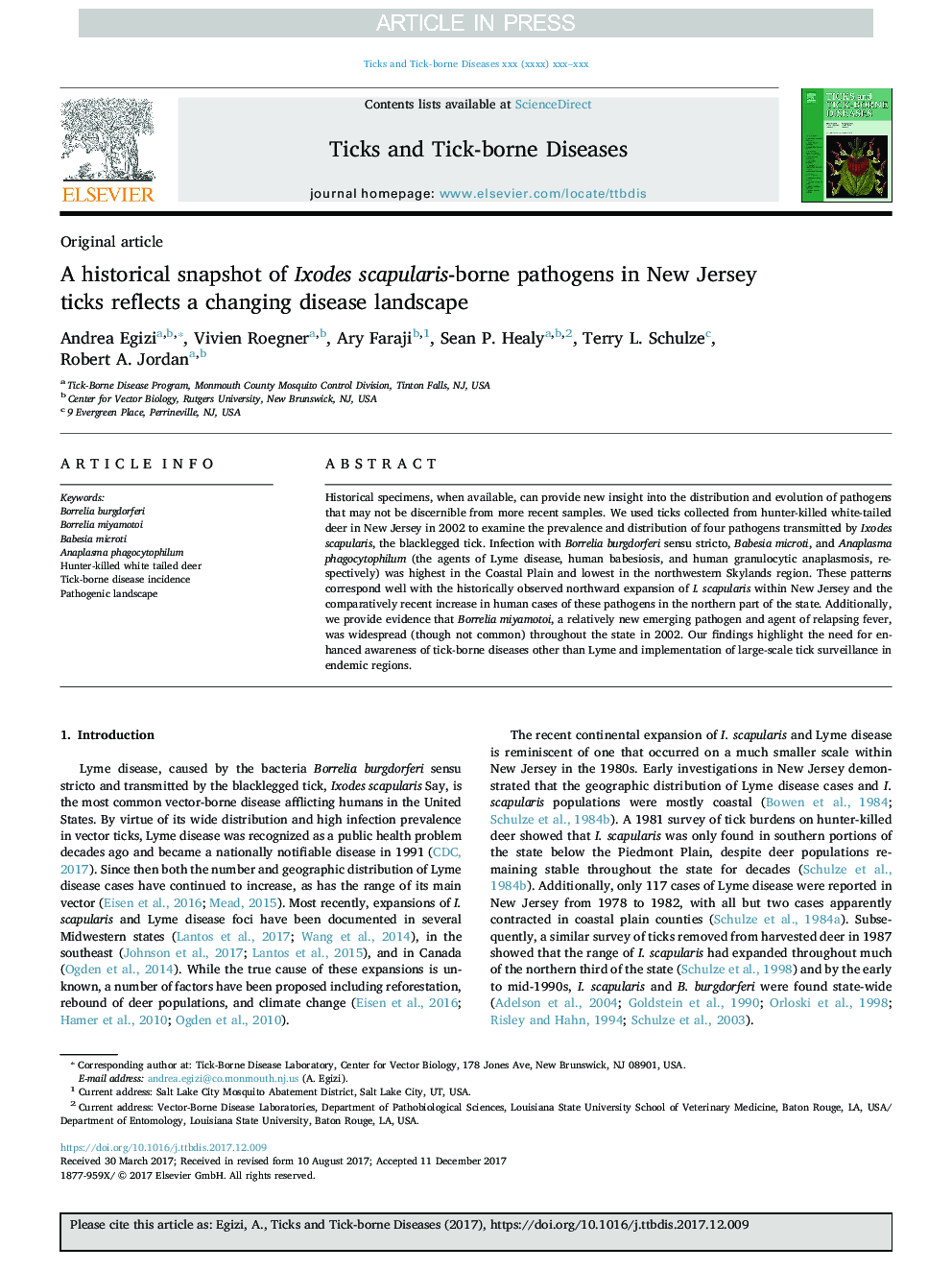| Article ID | Journal | Published Year | Pages | File Type |
|---|---|---|---|---|
| 8507563 | Ticks and Tick-borne Diseases | 2018 | 9 Pages |
Abstract
Historical specimens, when available, can provide new insight into the distribution and evolution of pathogens that may not be discernible from more recent samples. We used ticks collected from hunter-killed white-tailed deer in New Jersey in 2002 to examine the prevalence and distribution of four pathogens transmitted by Ixodes scapularis, the blacklegged tick. Infection with Borrelia burgdorferi sensu stricto, Babesia microti, and Anaplasma phagocytophilum (the agents of Lyme disease, human babesiosis, and human granulocytic anaplasmosis, respectively) was highest in the Coastal Plain and lowest in the northwestern Skylands region. These patterns correspond well with the historically observed northward expansion of I. scapularis within New Jersey and the comparatively recent increase in human cases of these pathogens in the northern part of the state. Additionally, we provide evidence that Borrelia miyamotoi, a relatively new emerging pathogen and agent of relapsing fever, was widespread (though not common) throughout the state in 2002. Our findings highlight the need for enhanced awareness of tick-borne diseases other than Lyme and implementation of large-scale tick surveillance in endemic regions.
Related Topics
Life Sciences
Agricultural and Biological Sciences
Animal Science and Zoology
Authors
Andrea Egizi, Vivien Roegner, Ary Faraji, Sean P. Healy, Terry L. Schulze, Robert A. Jordan,
